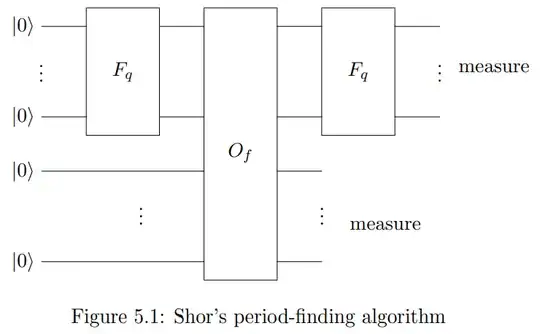In the usual presentations (e.g. Nielsen and Chuang) Shor's algorithm (in its quantum part) is presented as a special case of phase estimation, meaning it uses a circuit of the form "generate superposition, apply function, apply $QFT^{-1}$, measure":
But when I try to look at Shor's algorithm as a (variation on a) special case of the Hidden Subgroup Problem, e.g. in de Wolf's lecture notes or this thesis, the circuit used is similar to the one for the general solution of the abelian HSP, which has $QFT$ and not $QFT^{-1}$ at the end:
The other parts of both algorithms seem the same to me, and I agree that in the general HSP algorithm one should use $QFT$ and not $QFT^{-1}$, so I wonder what's the source of the difference. Do both ways lead to the same good result, or is it something deeper?

